Alumnus Luke Meduvsky Bridges Technical and Emotional Design
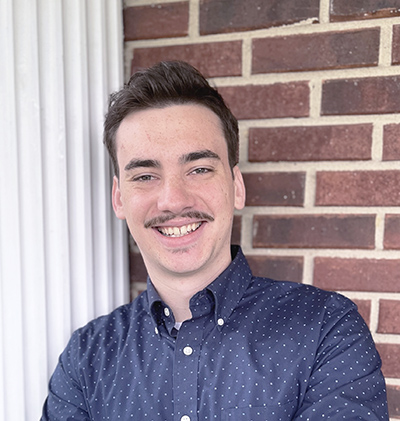 Luke Meduvsky received his BFA-Design from WSU with a concentration in Industrial Design. He is currently applying his skills to help entrepreneurs across a range of disciplines develop their products and brands. As a freelance designer working across sectors, he relies heavily on 3D modeling and 3D printing to develop and test his designs. 3D printing is critical because, he says, “sometimes something can work in a sketch and then not work in real life.”
Luke Meduvsky received his BFA-Design from WSU with a concentration in Industrial Design. He is currently applying his skills to help entrepreneurs across a range of disciplines develop their products and brands. As a freelance designer working across sectors, he relies heavily on 3D modeling and 3D printing to develop and test his designs. 3D printing is critical because, he says, “sometimes something can work in a sketch and then not work in real life.”
Like many industrial designers, Meduvsky discovered the profession through his interest in mechanical engineering. Meduvsky’s parents helped him identify industrial design, and after taking some credits at Macomb Community College, he transferred to WSU because it was affordable and he liked the curriculum. “The ID program at WSU offers diversity,” he says. “The teachers have different perspectives, and together that makes us think critically about the different aspects of design and become a well-developed designer. Brian Kritzman is more abstract and conceptual, and teaches the philosophy of design. Eric Streble is hands-on and practical, while Claas Kuhnan is more technical and digital. Siobhan Gregory teaches us to empathize with the user, to create designs that solve real human needs and social problems.”
Currently enrolled in a certificate program through the online learning platform Offsite, Meduvsky is focusing on strengthening his portfolio and industry network. He is enrolled in Cohort 2 which is meant for designers who want to “level-up.” “I love the prompts and the mentorship with industry professionals,” he says. He also stays up-to-date on the myriad of online resources available for designers that build upon the foundation he received at WSU. “Now that I have graduated, I can go on YouTube and watch these amazing design tutorials. I still have everything that I learned in school from my teachers at WSU, but now if I want to know more about a concept, I can dive in deeper with what is available online.”
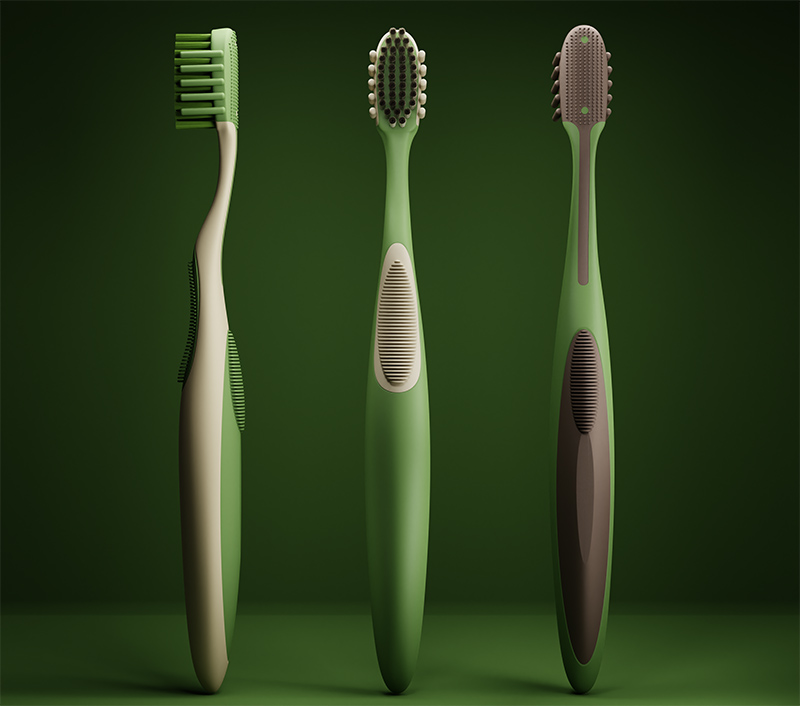
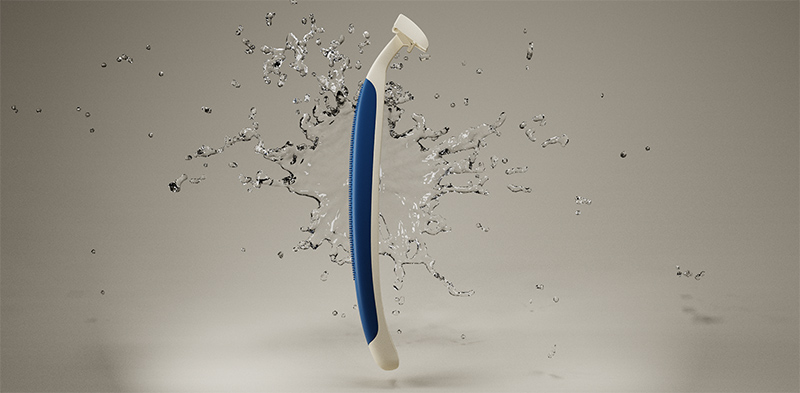
Staying Inspired and Keeping a Childlike Spirit
Meduvsky often reflects on his childhood to help him stay creative. “I used to take things apart and modify them when I was a kid,” he says. “I always liked tinkering with things … We can sometimes take ourselves too seriously so, when I can, I like to approach design with a childlike spirit. When I was a little kid, I would imagine all kinds of different objects, and now I can make them. That's a beautiful part of industrial design.”
While Meduvsky builds his client base as a freelancer, he is also working on personal projects that help build skills, expand his thinking, and stay connected to a “childlike” imagination. An important dimension of his designs is that they tell good stories. “I think, as humans, we all connect through stories, so it is important that products don’t just look good but that they tell a story,” he says. “If you can tell a story with your products then you can connect with people on an emotional level.” Sometimes the story comes from just a moment of inspiration, where he wants to take an abstract idea of feeling and make it tangible. One example is a pencil case inspired by a curtain. “The story of the pencil case was impromptu,” he says. “This was a morning where I woke up and pulled back the curtain and had a moment of inspiration. Michigan winter hasn’t been the greatest, but every time the sun comes out, nothing feels better than pulling back that curtain. This 3D-printed pen holder prototype was inspired by my curtain. I know I’ve seen this aesthetic before so I focused on the story of revealing an object ‘behind the curtain.’ The form mimics the curtain and also does a great job of cradling the pen.”
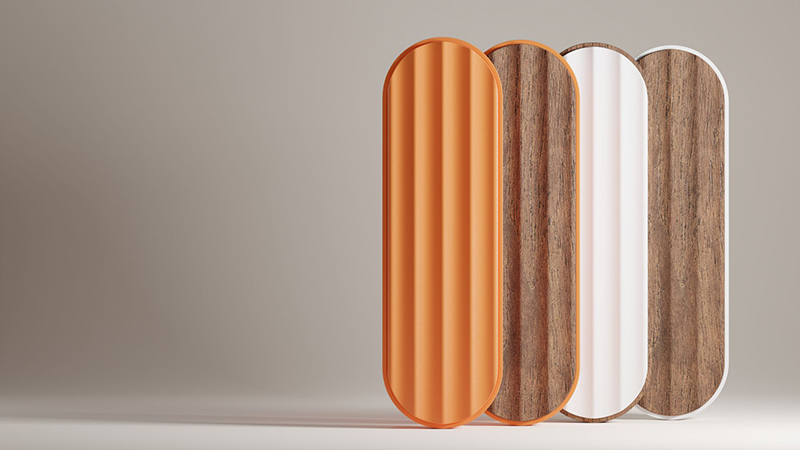
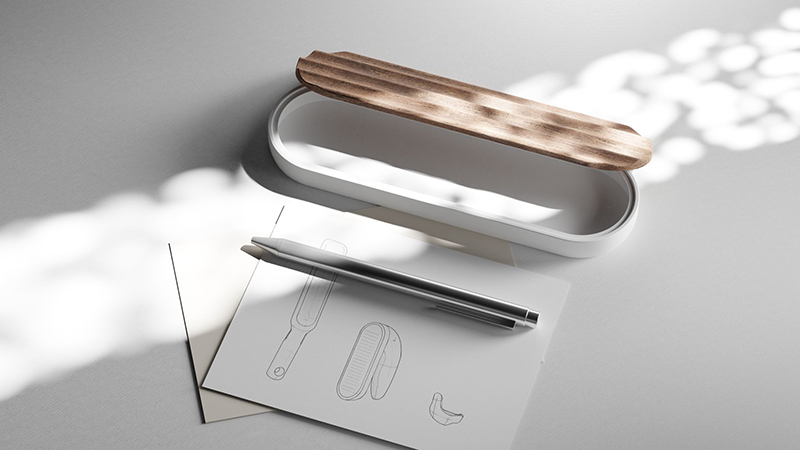
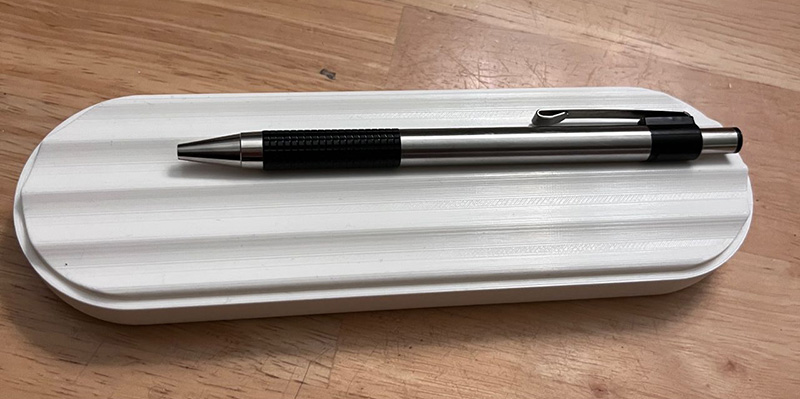
Meduvsky also stays inspired by looking to designers who are challenging the norms. He listens to the podcast “Minor Details with Nick Baker,” who, Meduvsky explains, “challenges the idea of form following function, and says that form can also follow story and emotions. That is central to emotional design.” He is also heavily influenced by 3D Visualization Artist Derek Elliot. Using the 3D-modeling software Blender, “he uses elements to express the feeling and emotions that are going on behind the products to enhance the products.”
Meduvsky borrowed that approach when rendering some concepts for the gaming accessory brand Glorious. The project, which was a self-directed activity, was to develop a gaming controller for Glorious. The results were very positive. “I wanted to express the form and development of what a game controller really is, and really study the brand language of Glorious, which has high-quality gear at reasonable prices,” he says. “I used this cloth-like material to express a flowing movement to the form. It also feels animated, and I think that is important for telling this brand story and for highlighting the best features of their products. I posted the work on Instagram, and people from Glorious were commenting … and being very positive, saying how much they love my work.”
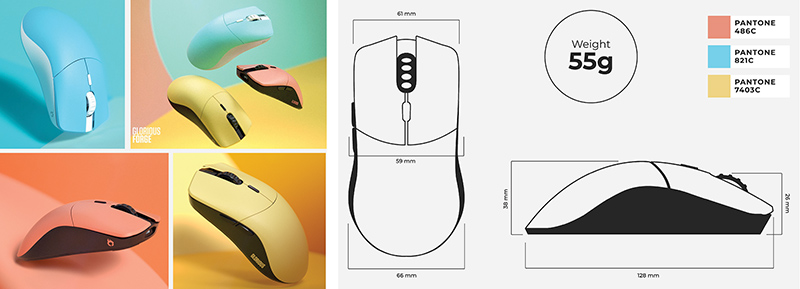
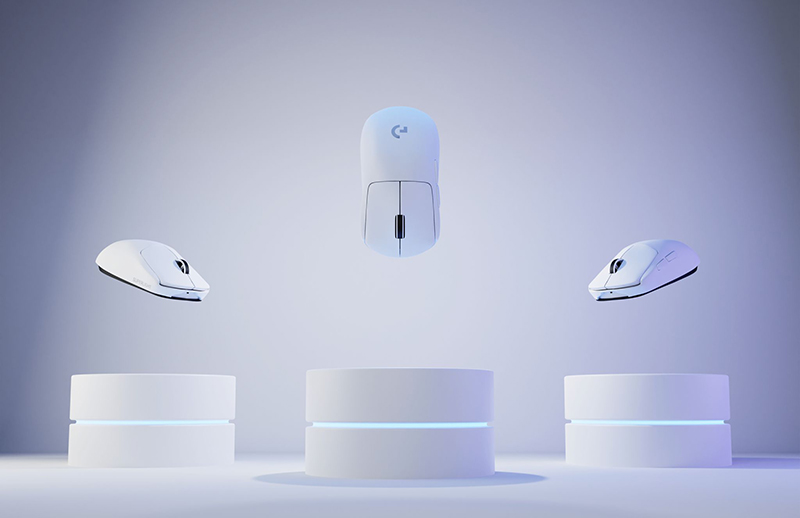
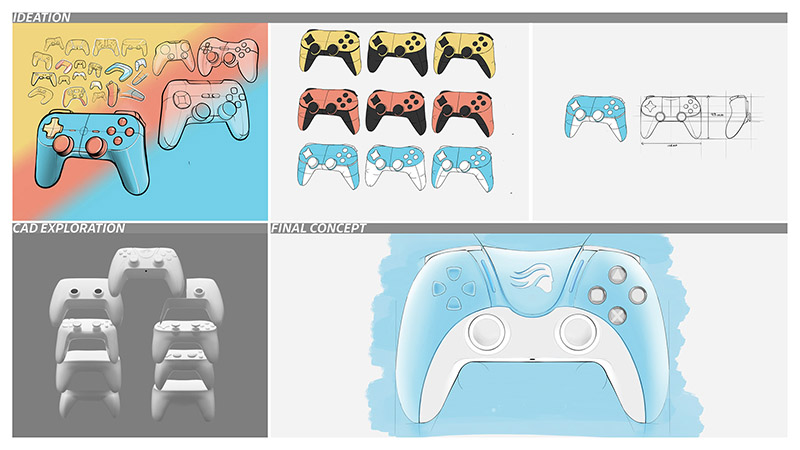
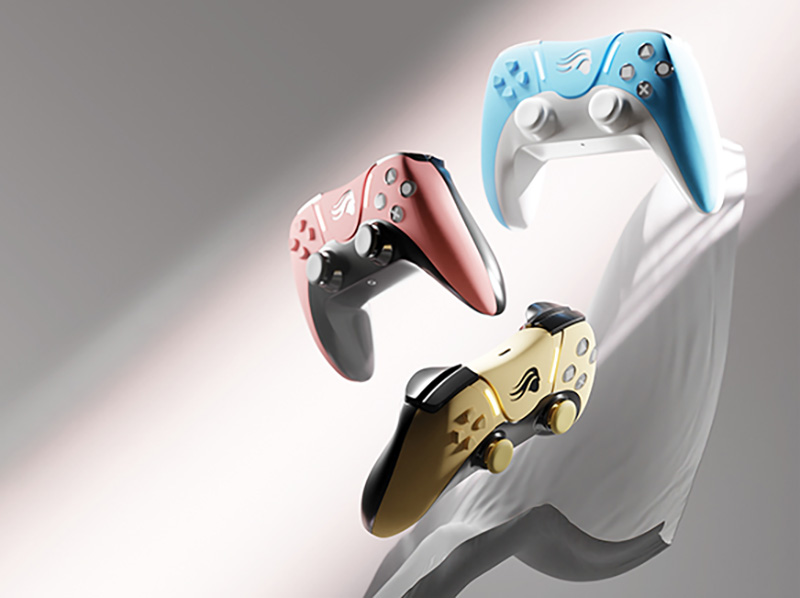
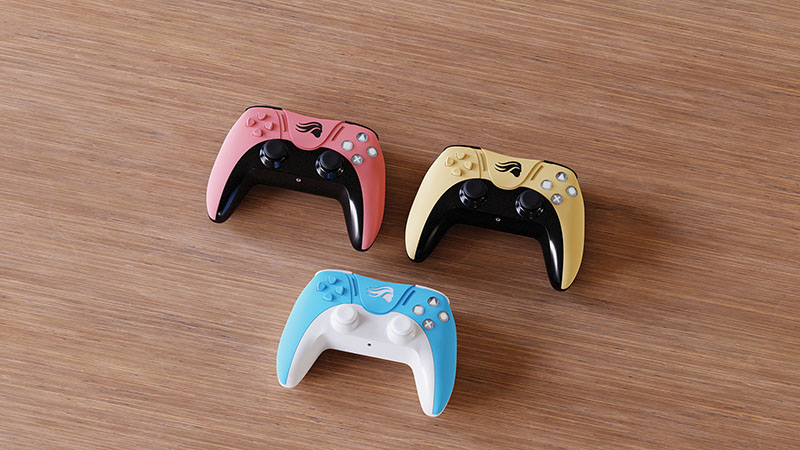
Working Across Sectors
Meduvsky brings natural technical abilities to his professional industrial design work, often developing designs that are minimal and modular and improving efficiencies. However, his passion is developing a strong visual design language and aesthetically unique products that can help tell a brand story. “I think my biggest skill is reading design language,” he says. “I start by studying the design language of a company or a brand and getting a sense of what they want to be. I study those shapes and forms that can make a brand stand out, and then try to push these boundaries.”
One example of this approach was a bandage box design that he developed for the health and beauty company Donnamax in New York City. “The company was manufacturing a package design for Bioswiss bandages that needed to accommodate lots of different sizes,” he says. “We needed to create something that was more universal and could work with their different products. While bandages are disposable, he wanted to make a container that people would want to save and reuse. Meduvsky designed a stackable tray system with universal slots. “By focusing on flexibility and reusability, I was trying to create something that is a bit further away from our competitors and more sustainable.” The design ultimately did not go into production, but the development process was a valuable learning experience.
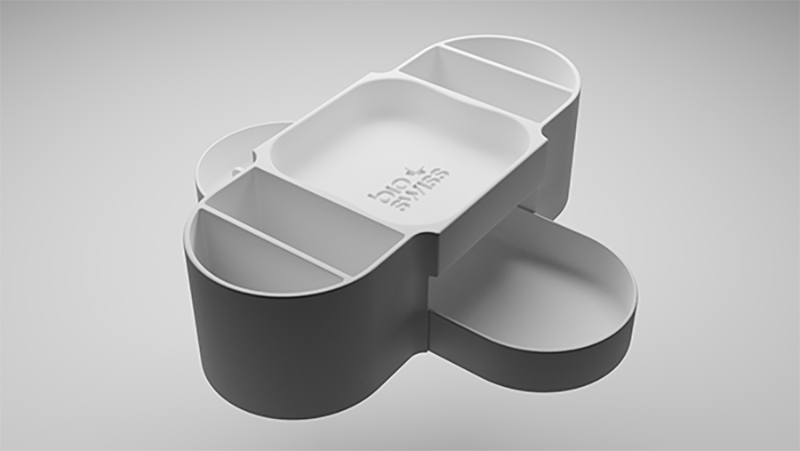
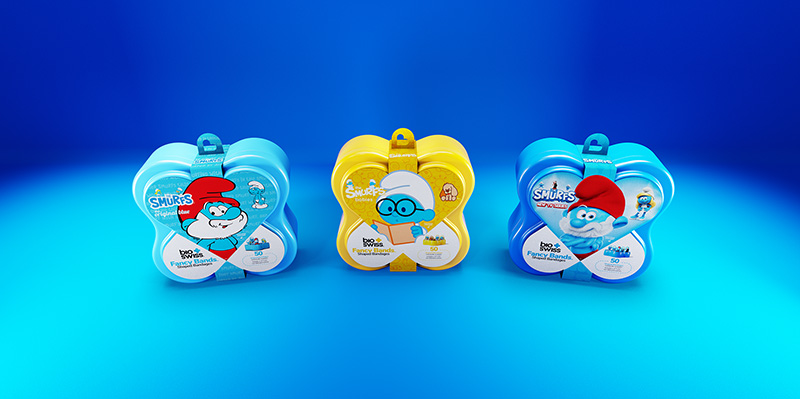
Being Flexible and Versatile
As a freelancer in a competitive market, Meduvsky has learned the value of being flexible and versatile, moving from package design to larger-scale projects and at different points in the product development process. He is currently working with local landscape designer Cary Altman of TerraScape Design Studio. Altman has invented a new luxury pergola design and patio furniture. The design innovation is that they are all flat pack. The design for the pergola is modular, made of two separate pieces with a waterfall feature on either side. After a lot of trial and error, Altman and Meduvsky are now in the process of building a full-scale prototype for testing and, ultimately, to be manufactured locally in Michigan.
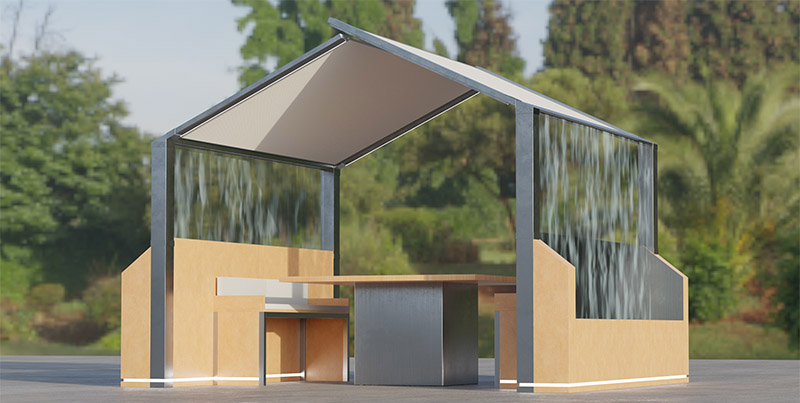
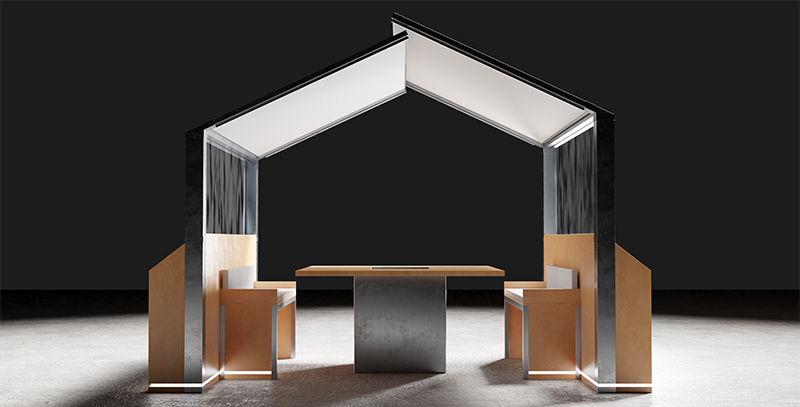
Another client is Kamran Avanaki, head of the Optical and Photoacoustic Imaging and Research Analysis Lab at University of Illinois Chicago. The lab is dedicated to the development of novel biomedical imaging technologies. “Working with this research team, the technology is brand new, and there are many engineering challenges to figure out,” he says. “The work is very technical, and there is some degree of aesthetics. I didn’t expect to be working on this type of medical product design, but it is a great challenge to be at the front end of these innovations, well before the ideas go to production.”
Looking Ahead
Meduvsky sees his continued 3D modeling and 3D printing skills as part of a long-term plan to stay relevant as an industrial designer. Unlike some more traditional sketching and modeling techniques, 3D modeling enables him to generate ideas faster and better. “I think that industrial design is no longer a linear process starting with hand sketches,” he says. “We can now jump right into 3D modeling, because it has become easier and faster to generate ideas. For example, with programs like Gravity Sketch, you are drawing with a stylus but generating a 3D model — a sketch that you can rotate and see all of the sides. It’s just incredible. It makes you more creative and want to push your ideas further.”
The creative process is something that should be valued and explored, Meduvsky says. “As a designer, you rarely own the product you design or the intellectual property. But you can own your process, and that is something that shouldn’t be boxed in. I am most excited about 3D printing when it comes to process because everything can be more customized and flexible. I would love to focus my business on that now because, in 10 years, who knows what we will be able to do?”